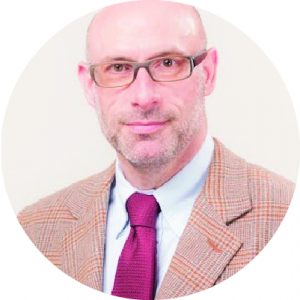 David Haerry has been an active patient advocate since 1997. A prominent member of EUPATI, David was also involved in several European and global research networks and research collaborations. He co-chaired the Patient and Consumer Working Party at the European Medicines Agency and has served the European AIDS Treatment Group (EATG) in various positions since 2004. In 2015, he became Secretary General for the Swiss Academic Foundation on Education in Infectious Diseases (SAFE-ID). He is now a board member of PFMD.
David Haerry has been an active patient advocate since 1997. A prominent member of EUPATI, David was also involved in several European and global research networks and research collaborations. He co-chaired the Patient and Consumer Working Party at the European Medicines Agency and has served the European AIDS Treatment Group (EATG) in various positions since 2004. In 2015, he became Secretary General for the Swiss Academic Foundation on Education in Infectious Diseases (SAFE-ID). He is now a board member of PFMD.
Tell me about yourself and your background?
I was diagnosed with HIV in 1986. This was still the early days of HIV and after I came out of the physician’s appointment where I had received my diagnosis, I thought, if I am to survive this then I need to know more than this young physician knows. I also realised that I had to take care of myself. I had to retire professionally about 10 years later because I was too ill to work, but around three years later I slowly came out of the weakest period of my life. I thought to myself if I survive this then I will spend the rest of my days overcoming this issue and so I did.
I started working on human rights-based issues and as the internet became more widespread, I joined a community of treatment writers who wrote conference summaries for patients online. This was 25 years ago but it took me on the long path to where I am now.
The issues I began focusing on as an advocate were scientific reporting in lay language from medical conferences; later on I focused on drug development itself, trying to influence trial protocols in phase II – IV and discussing development plans with agencies from very early on.
I then began engaging with research consortia and exchange with academics, and then also regulatory work with the EMA which I started in 2006 – I later co-chaired the Patient and Consumer Working Party.
I saw a major gap when it came to training patients because I saw how long it took to learn the basics… we had people coming in full of expectations but it took two to three years before they were fully operational. When EUPATI came along in 2012, I knew this was a golden opportunity to develop something across disease areas – I was very happy when this consortium was created and have been happy to play my role.
What do you hope to achieve as a new board member of PFMD? What can you bring to the table?
I believe from what I can see at the moment, having worked with industry and other stakeholders for many years, I can see the potential for this collaboration but am also aware of its limitations. I have seen good practices and not so good practices. I hope I can contribute from that perspective.
Why do you think PFMD is an important project?
Ten years ago, we had very few groups interacting in a structured way with industry on drug development. This included the HIV groups who of course pioneered this, a few cancer groups, some rare disease efforts, and that was pretty much it. In EUPATI, when we collaborated for the first time to develop patient educational materials, I realised that a change was happening. Many more companies were realising not only the potential of such a collaboration but also became interested in preparing themselves to engage with patients in a much more structured way. Companies also operate in silos, I have witnessed this myself. For example, in one major pharmaceutical company, we had worked closely with their HIV team but when it came to a new indication for the same medicine, for hepatitis C, the hep C team was lost – we ended up using their HIV team to train in their hep C team to ensure they were aligned. PFMD arrived at this time when change was beginning to happen as more and more patient organisations wanted to engage with industry and more companies gradually became aware that this was a meaningful, useful, and even important thing to do.
What do you think the future looks like in PE?
What I have learned from my experience is that nobody who has ever embraced patient engagement has ever regretted it. When you do that, you realise what you were missing in the past. True engagement is probably more complex and more challenging than people expect. It needs a lot of fine-tuning and adjustment as you work because very often on the patient side, they are not professionals and they need to learn. Education is important because patient engagement in drug development becomes much more meaningful when people understand why they do it. In the long run, I expect people to ask themselves why they didn’t start this earlier.

































































